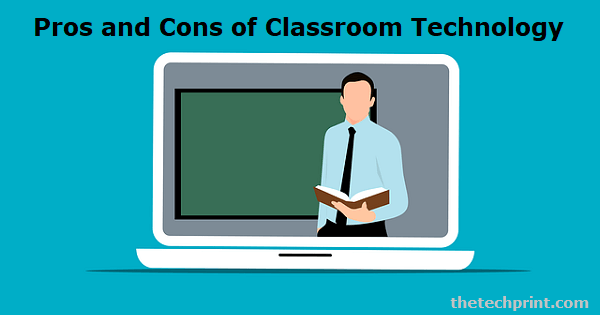With technology making all the necessary inroads in every aspect of our lives, it was only a matter of time before its impact was felt in the classroom. It would be naïve to think that technology has no place in the classroom. After all, we are dealing with 21st-century students who have grown up in a world where computers and cell phones are an integral part of their lives. However, there are two sides to every coin, and there are certain pros and cons of classroom technology. Let’s take a look at them one by one.
Parents want their kids to stay updated with technology and savvy with the new advancements. Thus, there are some pros of classroom technology that jump to everyone’s mind.
There is no denying the fact that when used effectively, technology can help in enhancing the learning process and achieve better outcomes. With the help of technology, students can be actively engaged in the learning process and have a more personalized experience.
Another big advantage of using technology in the classroom is that it can help improve students' engagement and motivation levels. When students are given a chance to use computers or other devices for learning, they tend to get more involved and motivated. This is because they feel they are a part of the learning process and are not just passively listening to the teacher.
Technology allows teachers to provide differentiated instruction to their students. This means that they can tailor their teaching methods according to the needs and abilities of individual students. This is extremely beneficial for those students who learn at a different pace or have different learning styles.
With the help of technology, teachers can make the learning process more efficient and concise. They no longer need to rely on traditional methods such as lectures and textbooks. With the help of multimedia tools and educational software, they can provide a more interactive and engaging learning experience for their students. Making the learning process easier is one of the major pros of classroom technology.
Technology also makes it easier for teachers to assess their students' progress. With the help of online quizzes, tests, and surveys, they can track how well their students are doing and identify areas where they need to focus more.
From distraction to lack of health concerns, there are several cons of classroom technology that may affect kids as learners.
One of the biggest cons of classroom technology is that it can be quite expensive. Not all schools can afford to provide their students with the latest computers and devices. Additionally, teachers also need to spend some time learning how to use these new tools before they can start using them in the classroom.
Another big disadvantage of technology in the classroom is that it can often distract students from learning. When students are given access to computers or other devices, they often tend to get sidetracked and start doing things unrelated to the lesson. This can disrupt the learning process and make it difficult for students to focus.
Another potential downside of using technology in the classroom is that it may encourage cheating. With the help of the internet, students can easily access answers to questions they are supposed to be solving on their own. This can make it difficult for teachers to assess the knowledge of their students effectively.
One of the dangers of using technology in the classroom is that it might replace traditional teaching methods altogether. This would mean that teachers would no longer need to stand in front of the class and lecture their students. Instead, they would simply need to provide them with the necessary materials and let them learn independently. This could lead to a decline in the quality of education.
One of the most serious disadvantages of using technology in the classroom is that it might foster dependence on technology. If students are constantly using computers or other devices for learning, they might become too reliant on them and may not be able to function properly without them. This could harm their overall development.
Conclusion
Classroom technology can be a powerful tool to engage students and help them learn when used correctly. However, it’s important to weigh the pros and cons of each type of technology before deciding if it’s the right fit for your classroom. We hope this article has helped you make an informed decision about whether or not to bring classroom technology into your learning environment.

Excessive use of technology has the potential to create antisocial circumstances. Because of constant usage, students may lose their ability to interact in social settings.
They have been linked to higher academic performance in numerous, large-scale studies in which technology has been integrated into the learning experiences of hundreds of students across several grades and subject areas.
Some of the advantages of using technology in the classroom are that it can help teachers more efficiently deliver lectures, engage students in learning experiences, and assess student progress. Technology can also help create a more interactive and engaging learning experience for students.
Some disadvantages of using technology in the classroom are that it can be expensive and time-consuming, distract students from learning, and encourage cheating. Additionally, technology may foster dependence on technology and replace traditional teaching methods.